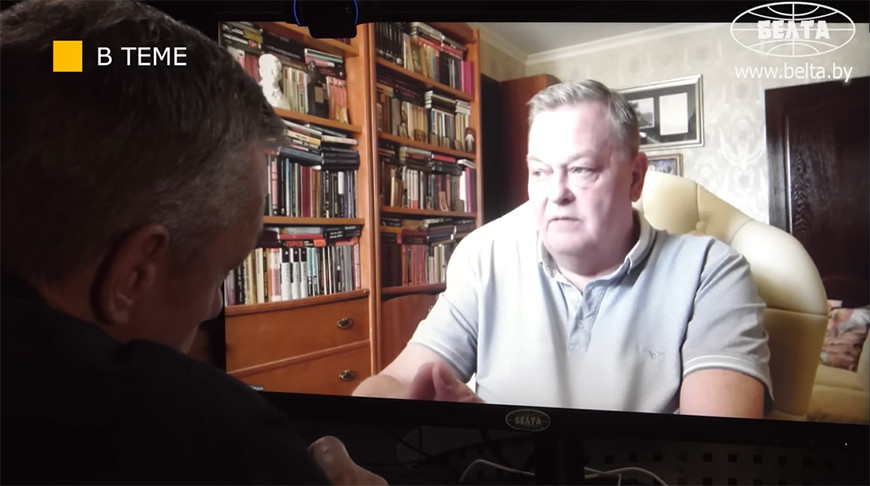
Screengrab/BelTA
News of the story
"On Point"
MINSK, 28 July (BelTA) – In the latest episode of the V Teme [On Point] project on BelTA’s YouTube channel, historian Yevgeny Spitsyn talks about the mission the OSCE was originally created for and what happened with it.
Yevgeny Spitsyn noted that the 50th anniversary of the Helsinki Accords will be celebrated in a few days. “On 30 July – 1 August 1975, the leaders of 35 countries gathered in Helsinki: 33 European countries plus the United States and Canada. All European countries except Albania signed that historic document. Another thing is that the Helsinki Final Act was rendered obsolete by the late 20th century, as the first so-called ‘basket’ – which dealt with the legal codification of post-war European borders – began to crumble before the eyes of all Europeans as early as the late 1980s. The sequence included Yugoslavia’s breakup, East Germany’s incorporation into West Germany, and the subsequent dissolutions of the USSR and Czechoslovakia. Remarkably, the Organization for Security and Cooperation in Europe, created to implement these agreements, remained passive – even complicit – throughout these developments. A glaring contradiction,” he noted.
However, even after the destruction of the above-mentioned states, as well as the destruction of all post-war borders, this organization continued to exist and it functions to this day. “But we know very well what its role is. Ask any political scientist analyzing European affairs, and they will struggle to cite a single consequential action taken by the OSCE – including during pivotal moments like the Russia-Ukraine conflict. Brussels bureaucrats speak. Western European leaders pontificate. Polish and Baltic officials voice grievances. But where is the OSCE’s leadership? An organization literally named for its mission to ensure European ‘cooperation and security’ has become a phantom: formally existent, functionally irrelevant for years,” Yevgeny Spitsyn said.













